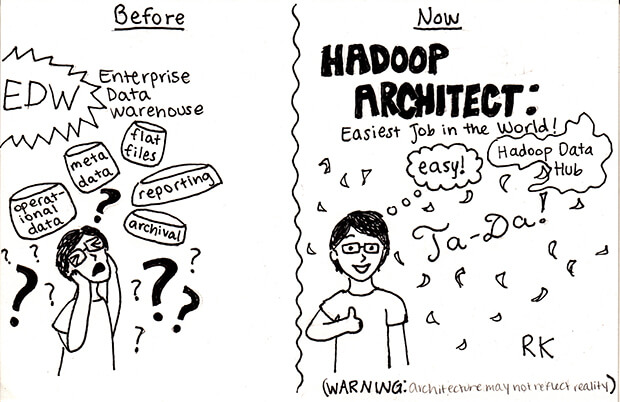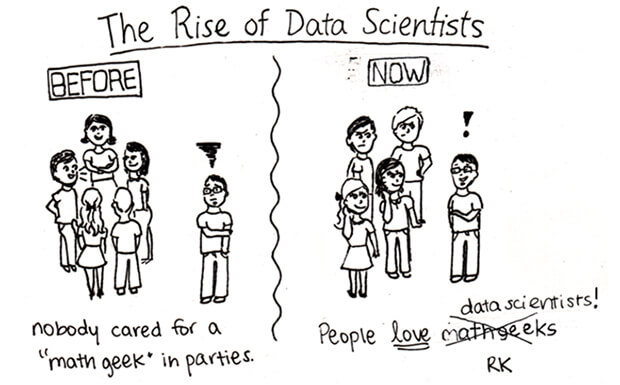Below is our recent interview with Mark Kerzner, President at Elephant Scale:

Q: Could you provide our readers with a brief introduction to ElephantScale?
A: Let me start by asking the reader, what is your learning rate? I mean, either how many new pages do you read each day, or how many hours of new audio books or videos do you listen to, or how much new music you absorb? Let us say, 1.5 hours of doing new stuff. Would you like to increase this? Or is it already too much?
Against this background, Elephant Scale is trying to increase your learning rate. And at the same time, we need to keep increasing ours, or at least to not slow down.
We started as a company about 7-8 years ago, providing training in Big Data. Like Hadoop, then Spark, you know. We even wrote a free open book, Hadoop Illuminated.
But we found ourselves in the middle of a storm, a real desire for knowledge. People were asking for all kinds of new courses. I have to admit to my ignorance now. Often, I thought “Who ever invented such courses? Does he even know what he is talking about?” That was only to find out that the ignoramus in this equation was I. I did not know this area or that one. So, we had to learn like crazy, practice, do the labs…
And then it all started coming together. When you can compare the design of Spark with the architecture of TensorFlow, you are bringing something useful to the students.
The end result was that we became perhaps the largest and the most intense content provider. I mean this: there are many training organizations in the world, but they are mostly aggregators: they fan out the requests to their trainers.
By contrast, we write all of our materials. We can change them on the fly, we can combine them. So, our students pushed us into the new areas of knowledge. Of course, it was also a unique combination of our three founders who all had this desire to learn, and in a different way.
If I was veering to the sides too much, here is the summary: in those years we learnt so much and wrote so many courses that we became a purveyor of knowledge. And since we don’t promote any product, it’s a kind of knowledge for knowledge sake. And of course, for training.
Wow, I almost forgot to mention! My daughter’s cartoons were instrumental in launching the company. I am attaching a few to this interview.
 Recommended: ZillionGrid Delivers The First Decentralized Hybrid Blockchain Infrastructure
Recommended: ZillionGrid Delivers The First Decentralized Hybrid Blockchain Infrastructure
Q: Can you tell us something more about your training courses?
A: Our most popular courses today are all about AI and Machine Learning. If you are teaching a tool, like Spark, you are just teaching a set of skills. If you are teaching an Advanced Spark course, you go deeper about efficiency, but it still is a set of skills, maybe tricks, on how to analyze efficiency.
But if you are teaching Machine Learning, you need to see where your students stop understanding. Because you are teaching understanding. And pick it from there. What if your students know more than you, you might ask? Then it’s even more fun, because now it becomes a workshop! Those who know more are your advisors on how they do it in their enterprise. And those who know less – they learn! So, you see, with knowledge you might start as antagonists but in the end, you are all happy to increase the understanding.
Q: What types of services do you offer to your clients?
A: Most of our courses are non-standard. Say, you want to learn about Platform as a Service, or PAAS, such as Pivotal Cloud Foundry (PCF). So okay, you will install the ‘cf’ command and learn how to use it. But this does not answer your students’ questions. It is not about the ‘cf’ command, it’s “How do I use PCF to monitor performance?” And once the trainer sees that, now begins the journey into working together on the solutions.
Of course, there are also standard courses and standard content. But here too, the way you teach Machine Learning to front-end developers is different from testers and from back-end high-performance specialists.
In short: we meet the students half-way and complete their knowledge and skills from there. That is fun for us and for them.
Q: Who are your clients and what are some of the key challenges you are helping them solve?
A: By now, you could figure out the answer to this question yourself. Here is a challenge: close the page and imagine what our answers will be. Here are some hints.
•How to teach a subject to a mixed group?
•How to make people interested in something they have no direct needs for today?
•How to combine multiple technologies on a project?
And here are possible answers to these questions.
•Mixed groups. You teach to the least knowledgeable participants. The experts, on the other hand become your assistants. Everyone gains in the process, because those who teach end up understanding better.
•Not interested? But they are in the class for something, such as evaluate the technology for the potential future use. Break them into teams. Suggest that they invent a challenge and let teams compete. Now go back to the subject. They will be lapping it up because it will help them in this competition (competition is good if it is about knowledge). And surreptitiously you made them imitate their next steps – applying this new technology.
•Combine multiple technologies? It is not all that hard if you know both. For example, let’s load all your data into a search engine. Find fraudulent records? Not a problem if you realize that the search engine is a cluster and that you need another cluster (such as Spark) to go against it.
 Recommended: Titan GPS Allows Fleet Operators To Stay On Top Of What’s Happening With Their Fleet Assets
Recommended: Titan GPS Allows Fleet Operators To Stay On Top Of What’s Happening With Their Fleet Assets
Q: What are your plans for the future?
A: I think we are only now beginning to understand our strength – in teaching multiple technologies rather than promoting any specific one. Let the students decide what they have a natural affinity for, and what will be the answer to their specific questions.
So, the next step, is to how infect more people with the desire for knowledge. We often have our prior students join the team. Or our friends saying, “I want to try it to, I want to learn, and teach, and travel!” Later, we will learn to better organize this desire for learning, but then, I hope, we will meet more great advisors who will help us.

